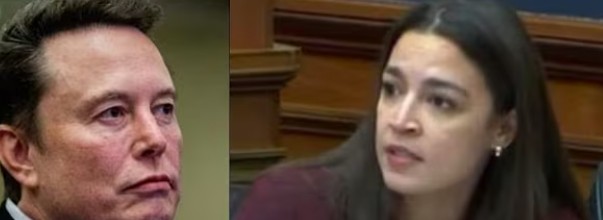Despite the Department of Government Efficiency's failures to cut spending and the president's support for a bill that will add $2.4 trillion to the federal deficit over the next 10 years, some wasteful government projects have been cut under the Trump administration.
Energy Secretary Chris Wright recently canceled 24 grants approved by the Energy Department under former President Joe Biden. The action netted over $3 billion in savings. Earlier in May, Wright axed an additional $7 billion of green energy loans approved by Biden.
Unfortunately for taxpayers, the savings that Wright has identified are only a drop in the bucket of the wasteful spending that the Biden Energy Department approved. Here are five of the most egregious examples:
1. $10 Billion for Ford's Electric Vehicle Push and Eminent Domain Abuses
In December 2024, the Energy Department's Loan Programs Office (LPO) closed a $9.63 billion direct loan to BlueOval SK LLC, a joint venture between Ford and South Korean conglomerate SK On. The loan was approved to fund "the construction of three manufacturing plants, to produce batteries for Ford Motor Company's future Ford and Lincoln electric vehicles [E.V.s]," according to the award announcement.
BlueOval has begun or completed construction for these facilities—one in western Tennessee called BlueOval City—and two in Hardin County, Kentucky, known as Kentucky 1 and 2.
In addition to allocating millions of dollars in tax credits for the rights to house BlueOval City, the Tennessee Legislature also created the Megasite Authority of West Tennessee, reports Reason's Joe Lancaster. The board was granted the authority to execute contracts on behalf of development, which includes the power to seize private property through eminent domain. In most cases, the board lowballed local property owners, including Ray Jones, who was offered "a measly $8,165" for his acre of land, even though the going rate was $200,000 per acre. There is no set date for when the plant will open.
Kentucky 1 has faced numerous occupational safety and health complaints from its workers. A review from The Courier-Journal found "dozens of workplace injuries; hospitalizations related to respiratory issues; unshakeable mold contamination; a bat-infested training facility; blocked emergency exit doors; and chemical exposure risks." The state has opened investigations into the plant, which is scheduled to begin production later this year. Kentucky 2's opening has been indefinitely delayed. Michael Adams, CEO of BlueOval SK, recently told WDRB, that the plant's opening date will be a market decision, but "the market is telling us that Kentucky 2 is not ready."
2. Facility Upgrades for ExxonMobil
The Bipartisan Infrastructure Law passed in 2021 created a new office within the Energy Department called the Office of Clean Energy Demonstrations (OCED), whose goal is to finance first-of-a-kind clean energy projects through private-public partnerships. One of the largest beneficiaries of the program has been Exxon Mobil.
The oil major was awarded a $332 million grant from OCED to "enable the use of hydrogen in place of natural gas" at a textile and plastics facility in Baytown, Texas. At the time of the announcement, the Biden administration said the project would prevent 2.7 million metric tons of carbon emissions per year. While an interesting technology, the project did not need taxpayer support. In the same year that Exxon received this disbursement (2024), the company reported annual earnings of $33.7 billion. The project's funding was canceled on May 30 by Wright.
3. Reducing the Carbon Footprint of Ketchup
No industry was spared from corporate welfare under the Biden administration, including condiments. In October 2024, Kraft Heinz was awarded a grant of up to $170.9 million from OCED. The award was intended to fund energy efficiency upgrades, the installation of heat pumps and electric boilers, and renewable energy technologies at 10 of the company's facilities.
The grant was also rescinded on May 30. Kraft Heinz says it will continue to invest in upgrading 30 of its manufacturing facilities and will invest $3 billion over the next five years "to modernize" its domestic supply chain infrastructure.
4. Financing for Lithium Processing in Nevada
In October 2024, the LPO announced a $2.26 billion direct loan to Lithium Nevada Corp., a subsidiary of Lithium Americas Corp., to build facilities to produce lithium carbonate—a critical component of E.V. batteries. The facilities will be sited next to and get their lithium from Thacker Pass, a mine site in Nevada that is estimated to hold the largest lithium reserves in the world.
The U.S. largely relies on imports to meet its lithium needs. These facilities could reduce this dependence, but that doesn't mean the loan isn't wasteful. The demand for lithium, and lithium-carbonate, is expected to significantly climb in the next few decades as the use of green technologies increases. In 2024 alone, demand for the metal grew by 30 percent.
Lithium Americas expects the mine, which began construction in February, to generate $2.2 billion per year in annual earnings. Taxpayers don't need to spend billions of dollars to support a project that the market seems to think will be successful.
5. Federally-Backed Green Steel Making
One of the largest steel makers in the U.S. was another beneficiary of Biden-era federal funding. In 2024, Cleveland-Cliffs, which generated $19.2 billion in revenue that year, was awarded up to $575 million in grants (which are still active) from the Energy Department.
One of these awards, worth up to $500 million, would implement hydrogen fuel into the steel making process and install two electric melting furnaces at the company's Middletown Works facility in Ohio. The project is expected to reduce greenhouse gas emissions at the plant by 1 million tons per year and received a $9.5 million disbursement in September 2024.
A second grant worth up to $75 million would electrify Cleveland-Cliffs' facility in Butler, Pennsylvania, which produces steel for transforms, motors, and generators. This project got a $19 million disbursement in August 2024. The company says these projects are expected to be live before 2030.
While Wright has canceled some of the most wasteful projects approved under Biden, federal backing for favored energy projects isn't going to end under the Trump administration. The Washington Free Beacon reports that the Energy Department is considering financing a $44 billion pipeline in Alaska.
The post The 5 Worst Green Energy Projects Funded by Biden appeared first on Reason.com.













 Bengali (Bangladesh) ·
Bengali (Bangladesh) ·  English (United States) ·
English (United States) ·